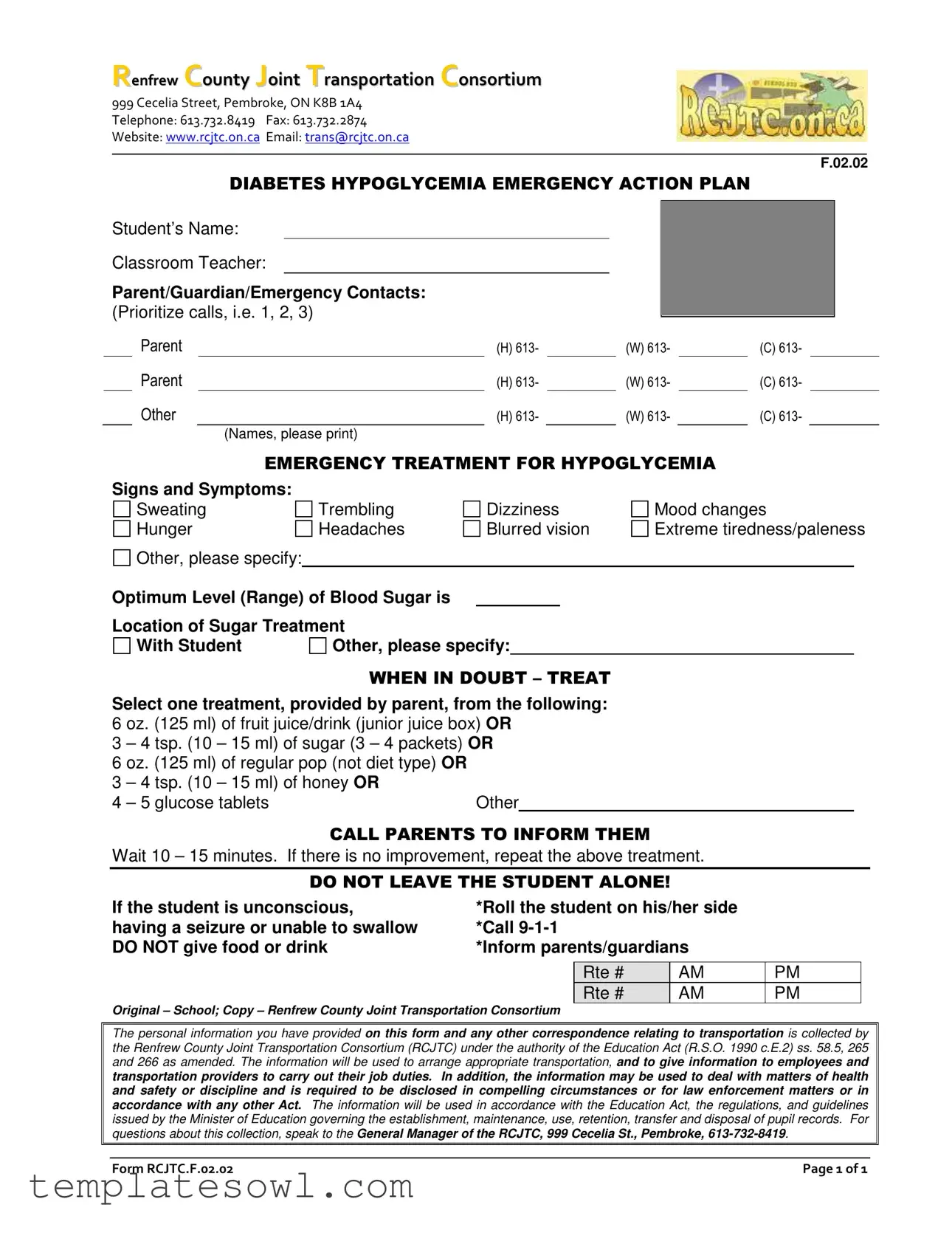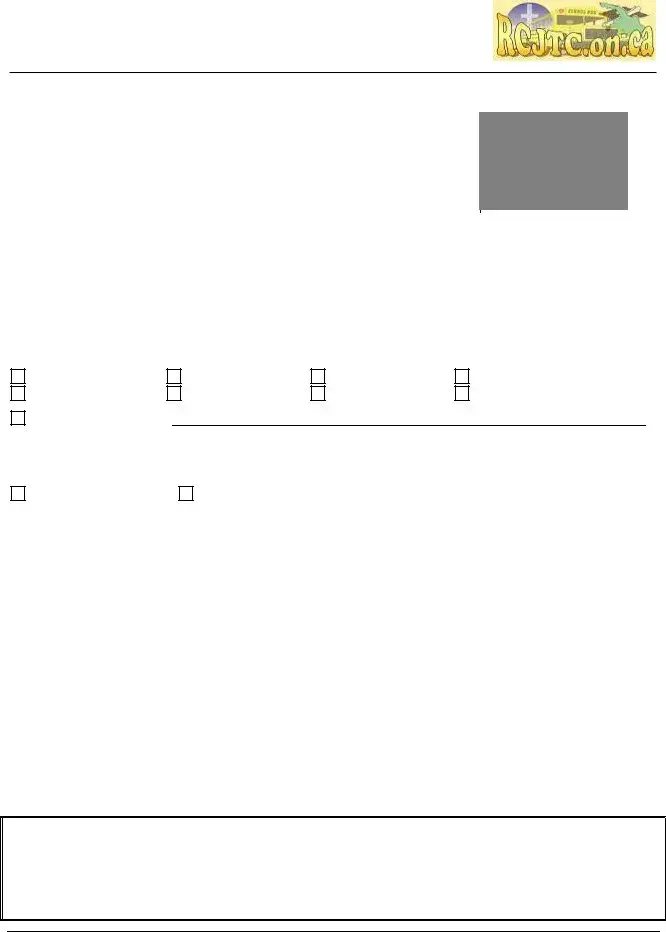What is the purpose of the RCJTC F 02 02 form?
The RCJTC F 02 02 form is used to collect important information regarding a student’s transportation needs and medical requirements. It helps ensure that the Renfrew County Joint Transportation Consortium can arrange safe and appropriate transportation for students, particularly in cases of health emergencies.
Who should fill out the RCJTC F 02 02 form?
The form should be filled out by a parent or guardian of the student. It is essential that the information provided is accurate, as it will be used to inform transportation providers about the student’s specific needs and any medical considerations that must be addressed during transport.
What information is required on the form?
The form requests various details including the student’s name, classroom teacher, and contact information for parents or guardians. Additionally, it includes a section to outline signs and symptoms of potential medical issues and the student's optimum level of blood sugar. The parent or guardian must also select a specific treatment option to be administered in case medical intervention is necessary.
What should be done if a student shows symptoms during transportation?
If a student shows symptoms of distress while being transported, the responsible adult should ensure the student is safe. In particular, if the student is unconscious, they should roll the student onto their side. It is crucial to call 9-1-1 if the student is unable to swallow or having a seizure. Parents or guardians should be informed immediately about any situation involving the student’s health during transport.
Is there a specific treatment that must be provided?
Yes, the form allows parents or guardians to choose one specific treatment option that can be provided in case of a health emergency. Options include fruit juice, sugar, regular pop, honey, or glucose tablets. It is important to specify this treatment, as it informs transportation personnel of the appropriate response in emergencies.
What should be done if the initial treatment does not improve the student’s condition?
If there is no improvement within 10-15 minutes of administering the chosen treatment, the same treatment should be repeated. Continuous monitoring is advised, and if the student remains unresponsive, emergency services should be contacted promptly.
How is the personal information on the form used?
The personal information provided on the RCJTC F 02 02 form is collected under the authority of the Education Act. It is utilized for arranging transportation and sharing necessary information with transportation providers to perform their duties. Additionally, the information may be used to address health and safety concerns, discipline issues, or legal matters as required.
Who can I contact for questions about the RCJTC F 02 02 form?
For any questions regarding the collection of information or the form itself, you can contact the General Manager of the Renfrew County Joint Transportation Consortium at 999 Cecelia Street, Pembroke. The telephone number is 613-732-8419.

